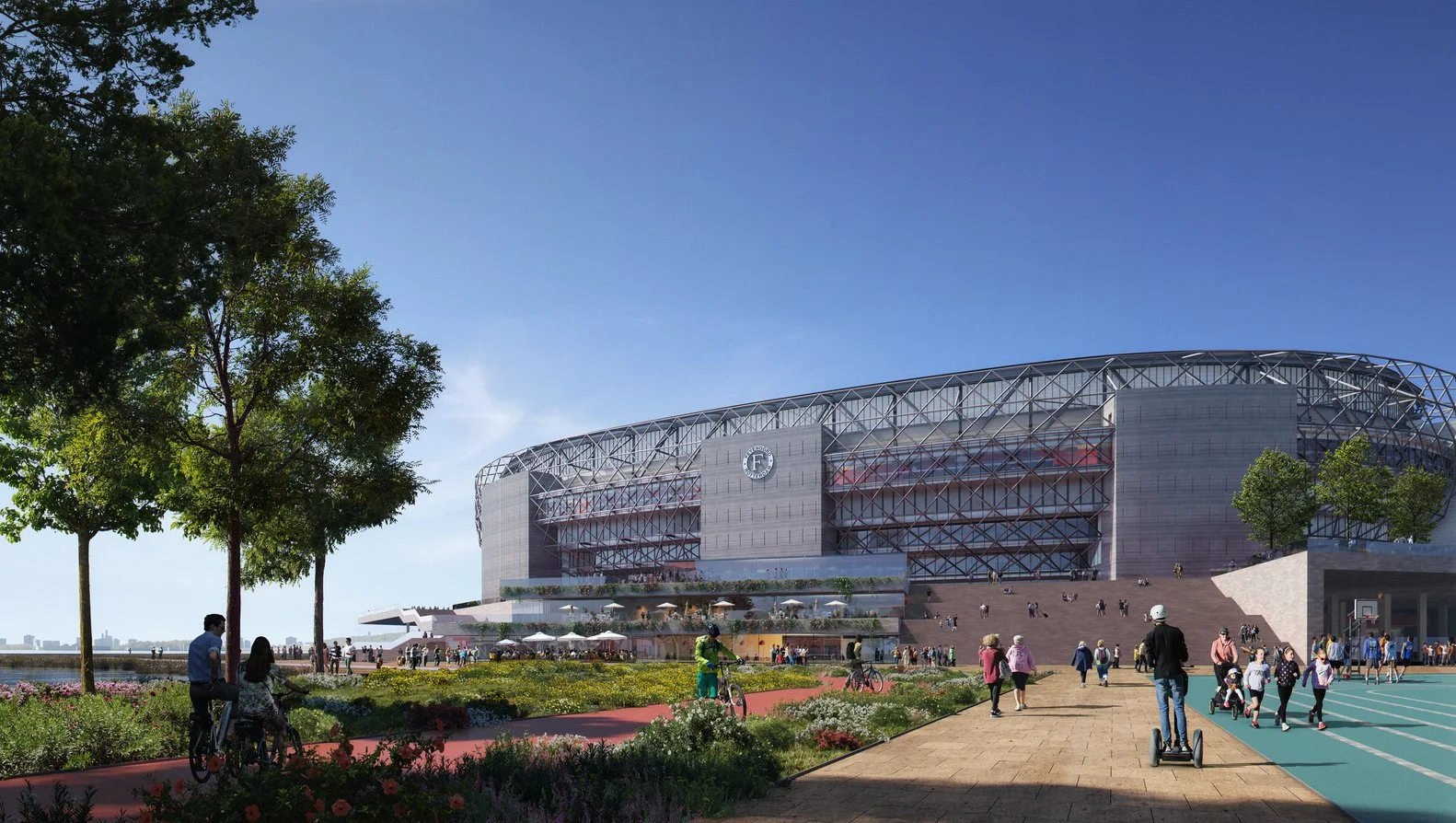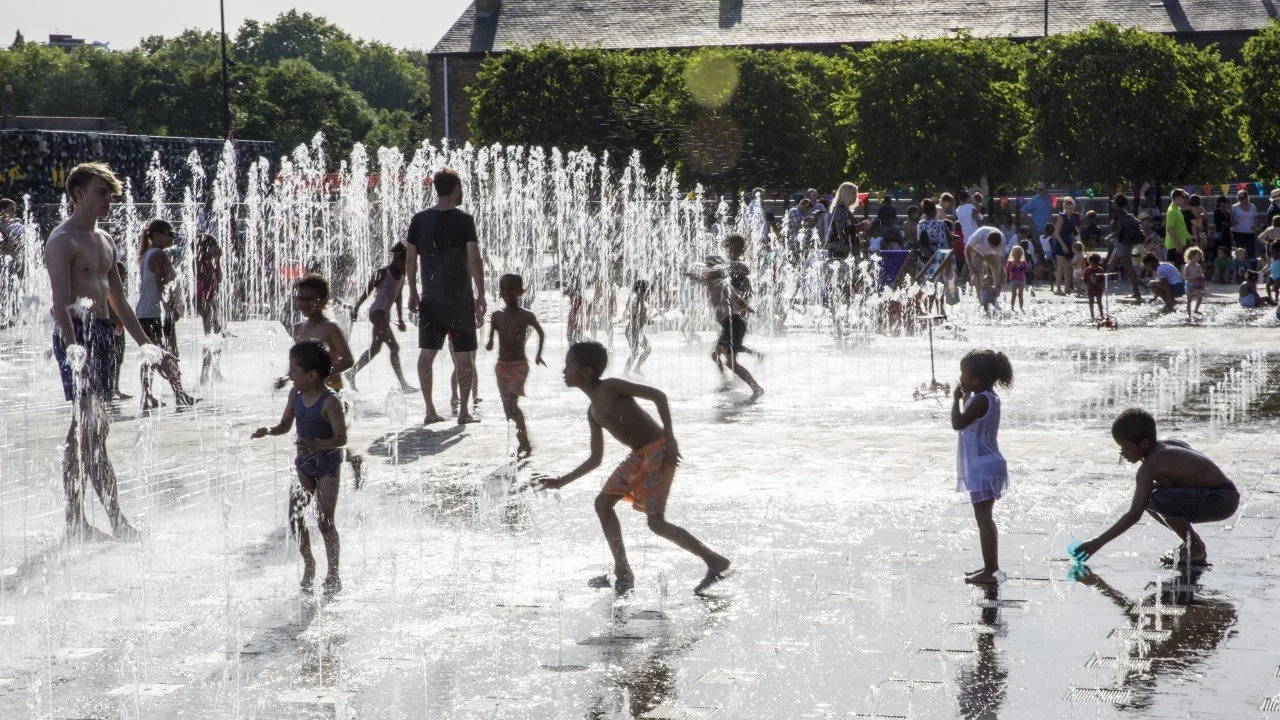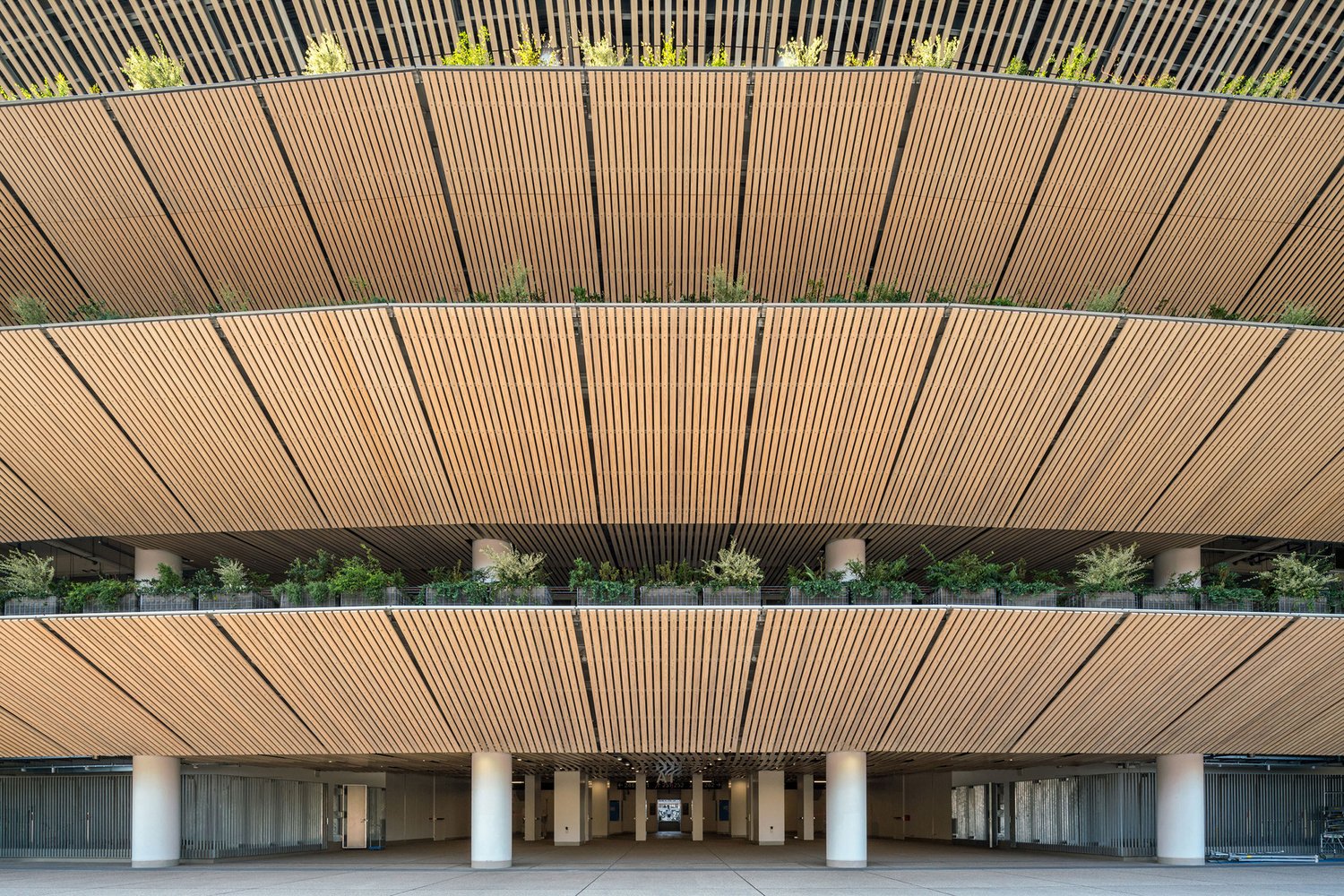
Active Public Realm
Designing spaces solely for match day does little to improve the connection between a stadium and the surrounding area. The future stadium will find new and innovative ways to deliver engaging, inclusive and playful public realm around stadiums.
Sports stadiums often benefit from generous amounts of surrounding land that allow for high volumes of spectators to funnel their way towards gates and turnstiles and then back out at the end of a match. When not occupied by fans, this public realm is often grey and barren.
Animating a stadium’s public realm with the addition of street furniture and planting needs to be balanced with safety guidance as set out in The Guide to Safety at Sports Grounds, colloquially known as the Green Guide. The UK Government-funded guidance is now in its sixth edition, with the latest version (2018) providing the inclusion of Zone Ex. This refers to areas either in public domain or private ownership that are considered integral to the circulation and safe management of people’s arrival at the venue and dispersal afterwards.
Image: Basketball court, Tokyo
Simple placemaking interventions such as colourful street art can help to enliven spaces, while painting on playful landscapes including football pitches, basketball courts and running tracks can lift a space and provide a useful dual landscape. CGI images from the proposed new Feyenoord Stadium in Holland show a public realm surrounding the stadium which includes planting, a water side edge, and public spaces for sport and recreational activities.
Flexible street furniture and basketball hoops can be introduced on an ad hoc basis to create a new use for spaces on non-match days, while water fountains and sprinklers built into the ground can be switched on to create places for children to play. Integrating electricity and water points into the design helps build in inherent flexibility to the space, opening up the potential for pop-up markets and events. More generous public spaces welcome in people from all ages and backgrounds, which can foster a sense of belonging and erode the disconnect between a stadium and local communities.
Image: Granary Square, London
Image: Ghelamco Arena, Ghent, Belgium
As progressive cities seek to improve the liveability and sustainability of the urban environment, an increased focus is placed on encouraging and enabling walking, cycling and travel via micro-mobility. Sports stadiums typically rely on fans travelling by car or public transport. The volume of fans who travel by bike to some of London’s main stadiums such as The Emirates, Wembley and the London Stadium is said to be less than 0.5% of all journeys made.
It should be the aspiration of stadiums and city municipalities to increase the number of spectators that access stadiums via bike. For this to happen, stadiums need to provide adequate provision of bike storage and bike rental opportunities while also ensuring that the public realm surrounding the stadium includes walkways and cycleways that connect to the wider movement network of the city.
Image: Utrecht train station, Netherlands
In the Belgium city of Ghent, the Belgium Pro League side KAA Gent achieve an average of 15% - 20% of spectators arriving at their 20,000 seater Ghelamco Arena via bicycle. To accommodate this there are close to 3,500 spaces for bikes around the stadium.
The opportunities for stadiums to innovate their approach to bike access are exciting. In the future the aspiration should be to see spectators cycling into a stadium via specifically designed bike ramps leading to designated and sheltered bike storage that include changing facilities, charging points for electric bikes, and lockers for bags and helmets.
Image: Utrecht train station, Netherlands
More from Sport+
Sport+ Nature
We look at some of the best global examples where nature has been used to embrace sports stadiums.
Sport+ Community
We spoke to Glen Sutton from Fulham FC to find out about the placemaking led approach to the re-development of their Riverside Stand at the historic Craven Cottage.
Sport+ Sustainability
The Johnan Cruijff ArenA in Amsterdam, home to Ajax FC, has pioneered an innovative new approach to generating energy within the stadium.









